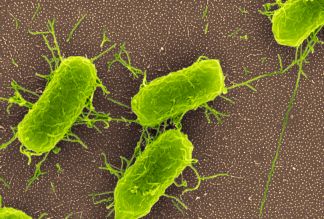
This new technology uses molecules containing snippets of DNA that specifically target E. coli, as well as DNA that makes the molecules shine with a fluorescent light. The glow is suppressed until the molecules come into contact with the bacteria, which then releases the fluorescent signal and causes them to light up. An inkjet printer applied the molecules onto plastic wrapping used to store food and were able to identify trace amounts of E. coli in raw beef, apple slices, and apple juice. “The difference in this method compared to the others is that we don't need to open the sample, take it to the lab, and analyze it. You can find out before even starting to open and use it,” says Tohid Didar, one of the developers of the technology. Currently, the product is only able to detect E. Coli but the team is now working to create other molecules for the packaging, to detect different types of pathogens, such as salmonella. “It’s a cool technology that shows promise,” says Sam Nugen, an associate professor in the Department of Food Science at Cornell University, who was not involved in the research. “The strategy for the food industry relies more on having a good prevention method,” he says. Peter Cassell, a spokesman for the FDA, confirmed that the agency focuses on prevention, not detection, of dangerous bacteria. They are currently looking to partner with large grocery stores and food packaging facilities to optimize the sensor for these industries. He thinks the molecules could be printed onto standard food packaging for “a couple of cents,” so the added cost to consumers would be negligible.







